Rhubarb has a longer harvest season than many people realize. Rhubarb is a perennial plant that lives for years and years. With the right maintenance, you can keep a rhubarb patch going almost indefinitely.
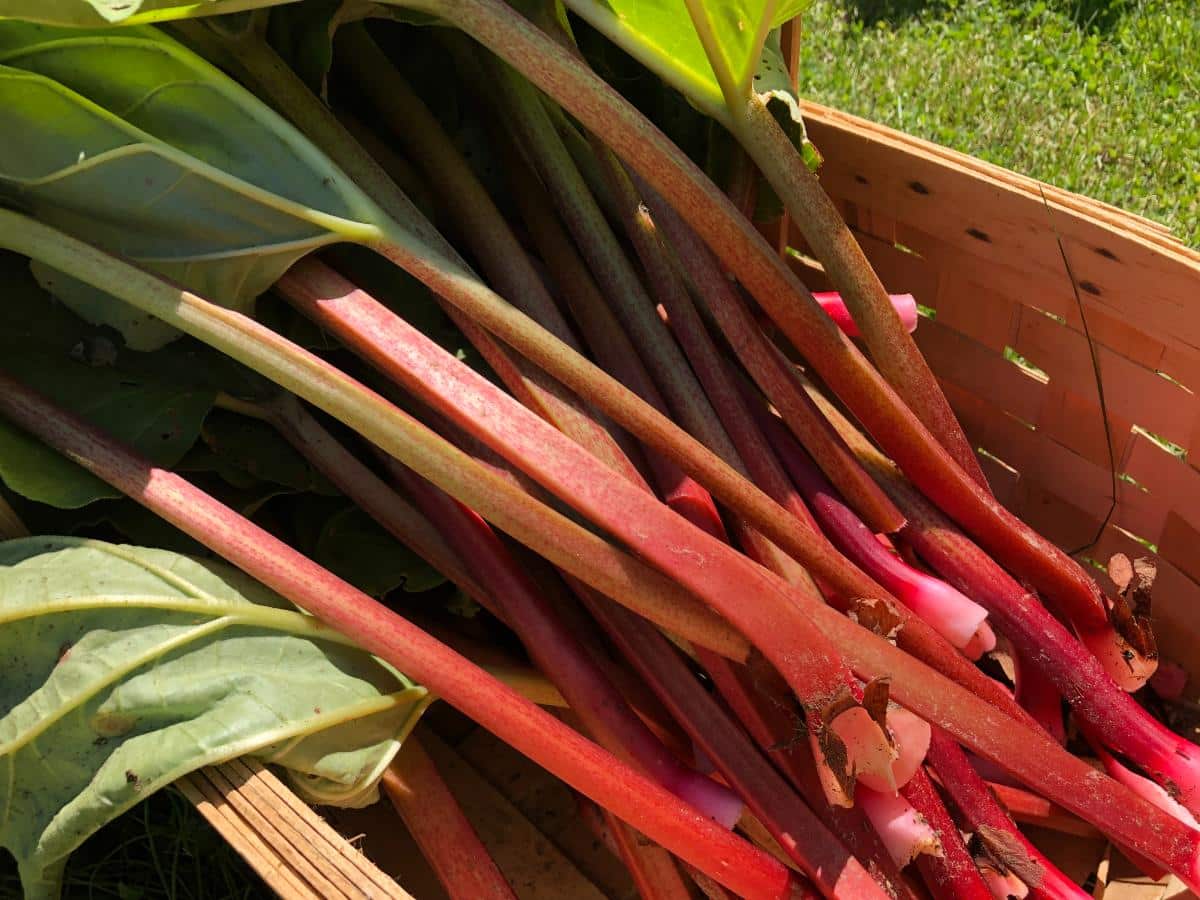
You can maximize annual harvests, too, by following a few simple tips, knowing a bit more about the plant, and by maintaining your patch for maximum production.
Jump to:
- How to Get the Most Out of Your Rhubarb Patch Each Season
- 1. Don’t Harvest in the First Planting Year
- 2. Cut Flower/Seed Heads Off as Soon as You See Them
- 3. Harvest Stalks After 10 to 12 Inches of Growth
- 4. Pull and Twist, Don’t Cut Stems
- 5. Mulch to Preserve Moisture and Reduce Weed Competition
- 6. Harvest Regularly
- 7. Pick the Oldest and Largest Stalks First
- 8. Pick Around 30% to 50% of the Plant
- 9. Get Rid of Stalks that are Past Their Prime
- 10. Keep Rhubarb Watered
- 11. Harvest Sparingly After June (Or After About 2 Months of Harvesting)
- 12. Slow Harvests When Plant Production Slows Down Noticeably
- When is Rhubarb Ripe? When Can You Pick Rhubarb?
- Don’t Forget to Divide
- Rhubarb is a Hungry Plant
- This Year’s Care and Harvest Affect Next Year’s, Too
How to Get the Most Out of Your Rhubarb Patch Each Season
Maximizing your annual harvests of rhubarb relies part in the picking and part in how you manage the patch with an eye to the future. Here are 12 tips to help you get the most rhubarb from your patch this year:
1. Don’t Harvest in the First Planting Year
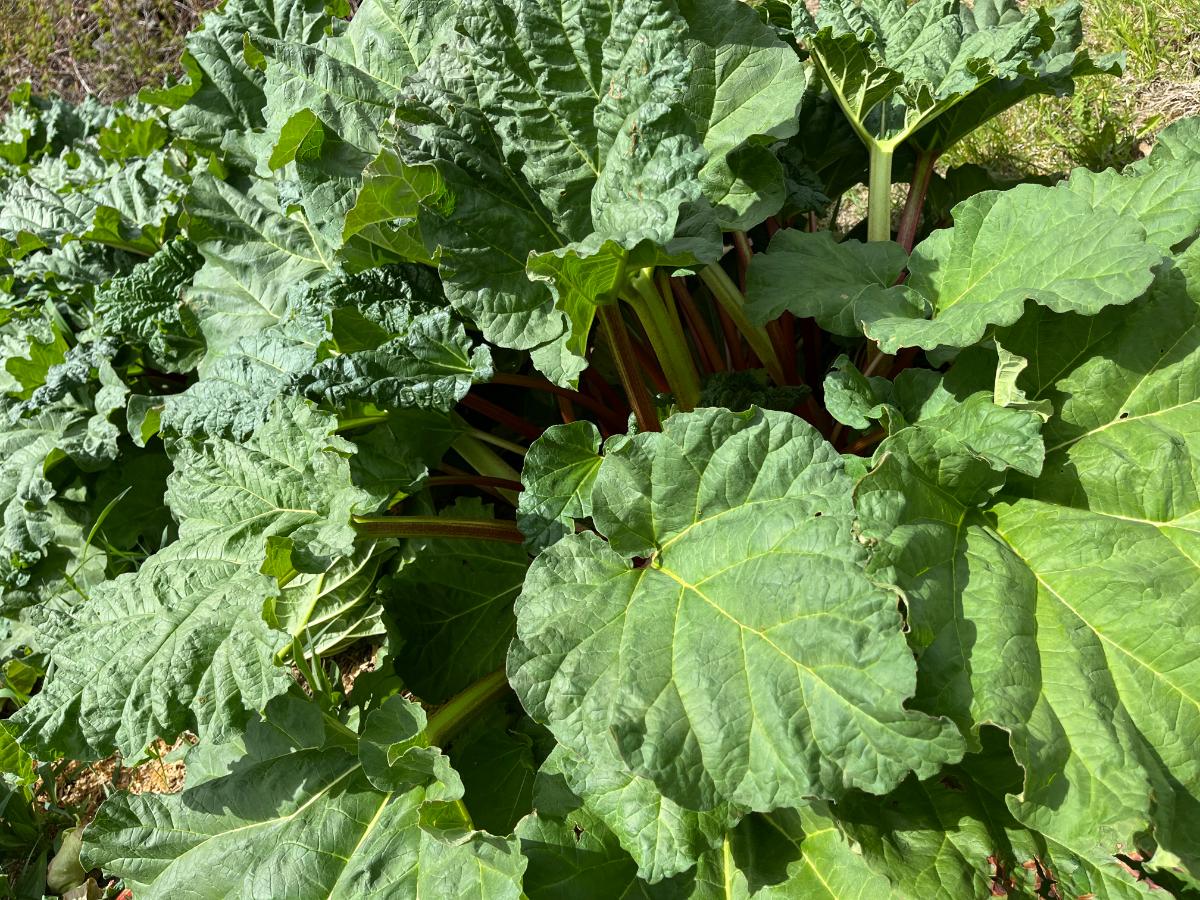
Don’t harvest any rhubarb the first year you plant your patch. This is a time to let the plant establish and grow a strong root crown. It might be hard to wait, but this is what sets your patch up for the biggest, best harvests for the next five years (and more).
Note: If you started your rhubarb patch from seeds instead of root divisions/plants, you need to wait until year three to harvest. Plants started from seed are much smaller and need longer to get growing.
2. Cut Flower/Seed Heads Off as Soon as You See Them
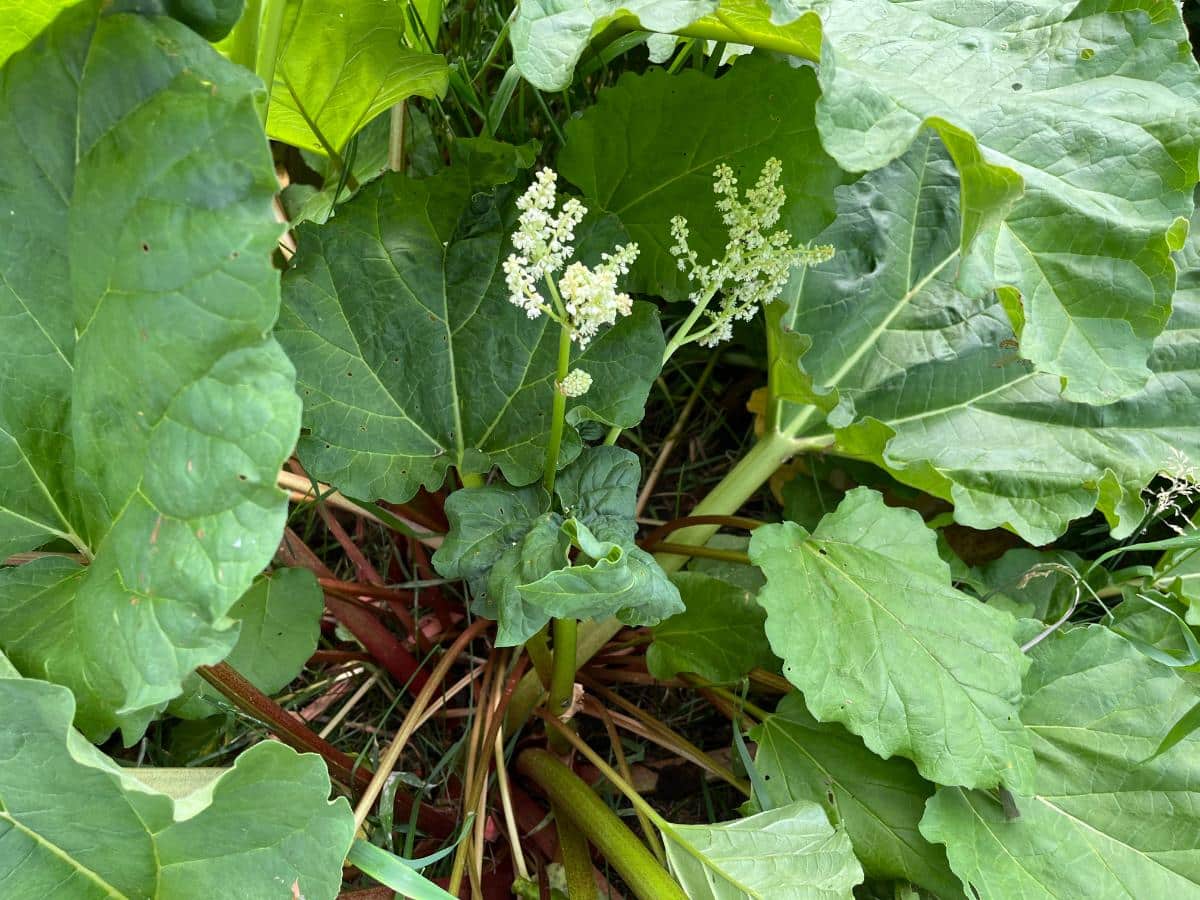
Seed heads take energy from the production of the rhubarb plant. They send that energy into flower and seed production.
This will reduce the size and yield of your plant. Cut off all budding or flowering stalks as soon as you see them; You'll know the difference – they will have unfurling white heads as the stalks grow.
It’s not uncommon to have seed heads grow on rhubarb plants. You may even see them fairly early in the year – even before or just when harvests start. Several things trigger flowering and seed production, including uneven water, dry conditions, and sudden hot conditions that cause the plant to bolt. This is a form of self-preservation in times of stress.
Both young and old rhubarb plants tend to grow flowering stalks more readily. They may grow them with no apparent cause or reason.
Flowers and seeds are not necessary for the growth and production of your rhubarb. If you cut them all off (which you should do), you will still have rhubarb to harvest. The stalks come from the roots of the plant, and you can propagate new plants from divisions, so you don't need the seeds at all.
Propagating by division is faster, more reliable, and preferable to growing from seed anyway.
3. Harvest Stalks After 10 to 12 Inches of Growth
Wait until your stalks are at least 10 to 12 inches before you start pulling them. This lets the plant get ahead of you and ensures that you don’t take away their food source (the leaves and photosynthesis). Once you have stalks that are around one foot tall, you can start harvesting (following the rest of the rules below).
Note that the 10 to 12 inches should be the length of the stalk, not including the leaves.
4. Pull and Twist, Don’t Cut Stems
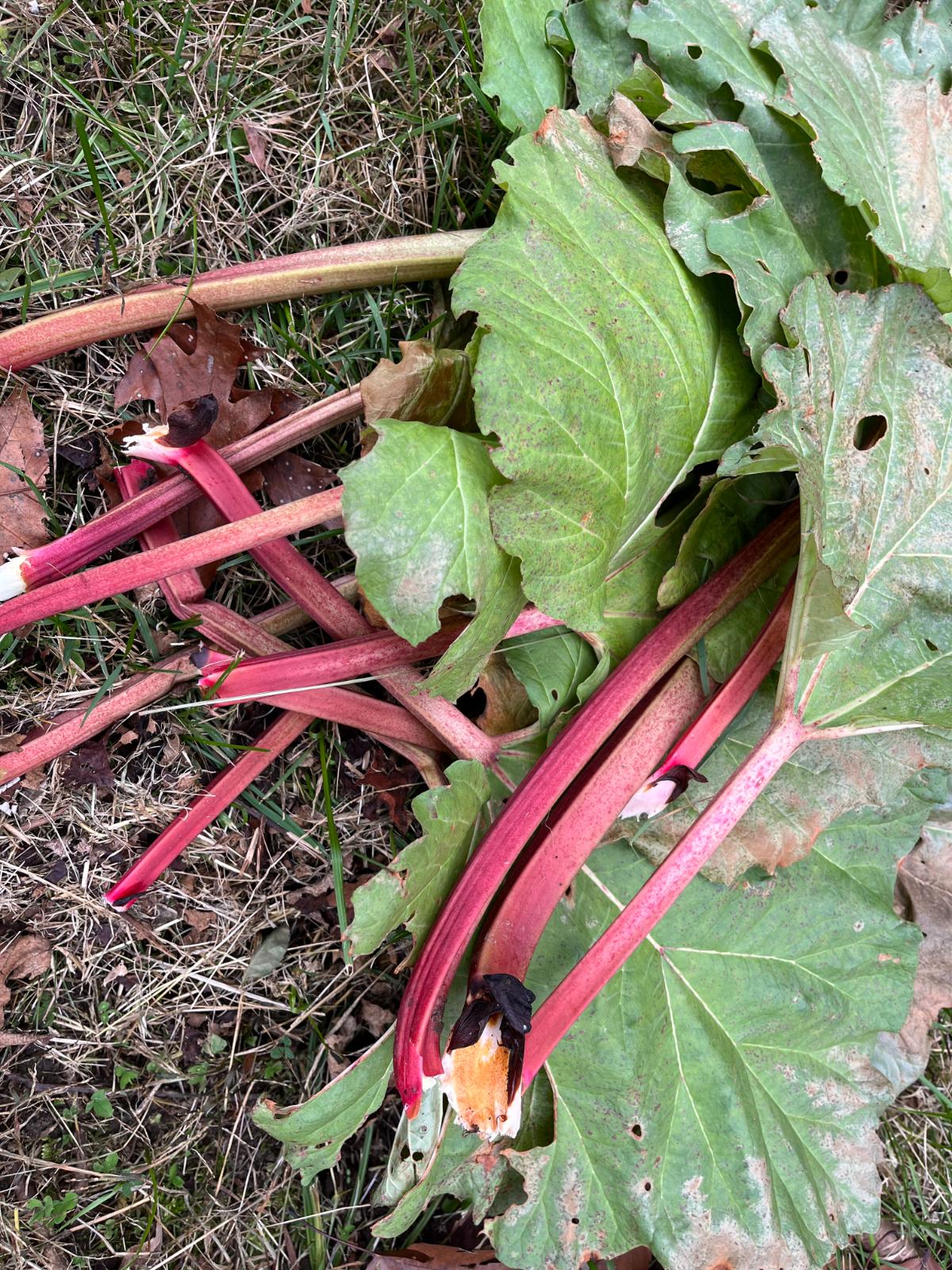
When you harvest rhubarb, the right way to do it for extended harvests and for the health of the plant is to twist and pull the stalks at the base. This will give you the full stalk all the way to the ground.
A firm twist and pull will easily separate the stalks from the base of the plant. Grab low on the stalk so it pulls away and doesn’t break. If it does break, pull off the remaining stub of stalk.
It is best not to cut the stalks with a knife for a couple of reasons.
First, pulling the stalks off stimulates more plant growth, and that gives you more rhubarb to harvest.
Secondly, cutting stalks leaves a stub that can rot. This can lead to crown root rot, which can cause permanent damage to your plant.
5. Mulch to Preserve Moisture and Reduce Weed Competition
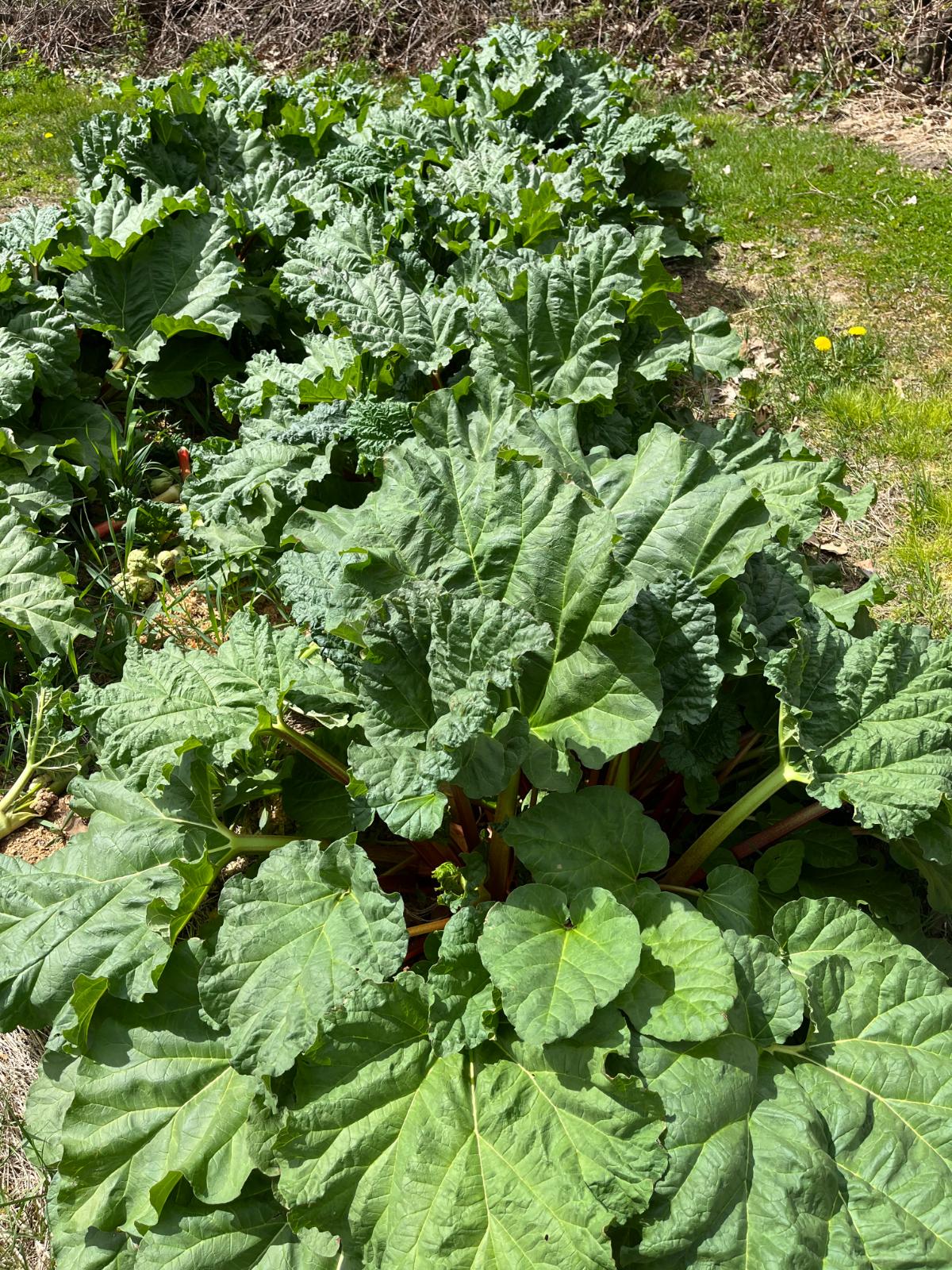
Rhubarb is a large plant with a good amount of moisture in its stalks. It also has to support large leaves to feed the plant. This takes a lot of moisture.
Mulching will help keep the ground from evaporating moisture into the air and will reserve more water in the ground for the plants, keeping them thriving and productive.
Mulching also helps to reduce weed competition. Rhubarb does pretty well in competition with weeds, but you’ll get the biggest and best harvests from plants that don’t have to put their energy into competing for nutrients and resources. Keeping weeds down also preserves water for the rhubarb plant.
When the plant is at its peak and the leaves are large and full, it will shade out a lot of weeds but before and after that, weeds can become more problematic.
6. Harvest Regularly
Regular harvests stimulate the plant to grow. It is the goal of plants to survive and reproduce. For a plant like rhubarb, it will be encouraged to grow more if you pick from it.
So, when you harvest, you encourage your plant to grow even more delicious rhubarb!
7. Pick the Oldest and Largest Stalks First
The largest stalks are usually those that are produced first. As the season goes on, stalk size becomes smaller.
By removing the largest and oldest stalks, you are removing what is one of the biggest draws on the resources of the plant. You are also stimulating more production.
This way, you are also getting stalks at their prime instead of letting them go by and letting them become too much of a burden to the plant.
You don’t have to wait for stalks to get old, either. However, harvesting the first stalks before the younger stalks will help keep a healthy rotation of growth and production.
8. Pick Around 30% to 50% of the Plant
The plant will still need leaves for photosynthesis to feed the roots. If you take too much away, the plant won’t be able to support itself and will basically starve to death.
Keep this in mind when you harvest and don't pick more than 30% to 50% of the plant in any one harvest session. If you need more rhubarb than what you can pick at once, make a plan to divide the plants and plant more rhubarb. That way, you can pick up to 50% of each plant each time, and you’ll have lots to harvest.
Make sure that the 30% to 50% you leave has some strong, healthy stalks that will keep feeding the plant. In other words, don’t pick the best and leave only the worst and what’s going by, or the plant won’t have a food source!
9. Get Rid of Stalks that are Past Their Prime
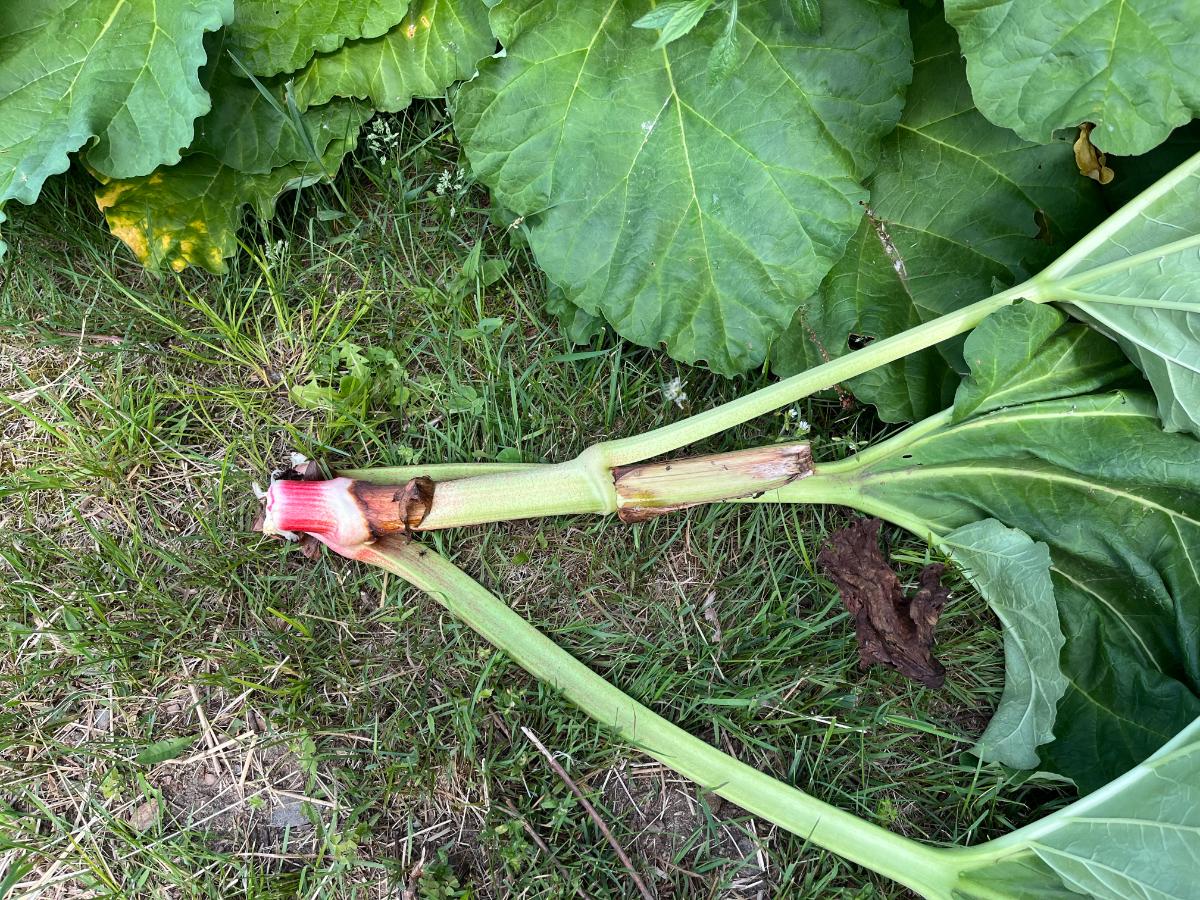
Once stalks become limp and start to die back, they’re not doing the plant any good as a support and food source. All they are doing is being a draw on the plant.
Even if these stalks are past the quality you want to cook and eat, you should pull them off. This lets the plant put its energy into the younger, more productive stalks and better supports its growth and production.
10. Keep Rhubarb Watered
Rhubarb will wilt if it is too heat-stressed, and production will be significantly impacted, too.
See to it that your rhubarb gets a good soaking every 7 to 10 days. If you don’t get good rain storms, supplement and water it yourself.
11. Harvest Sparingly After June (Or After About 2 Months of Harvesting)
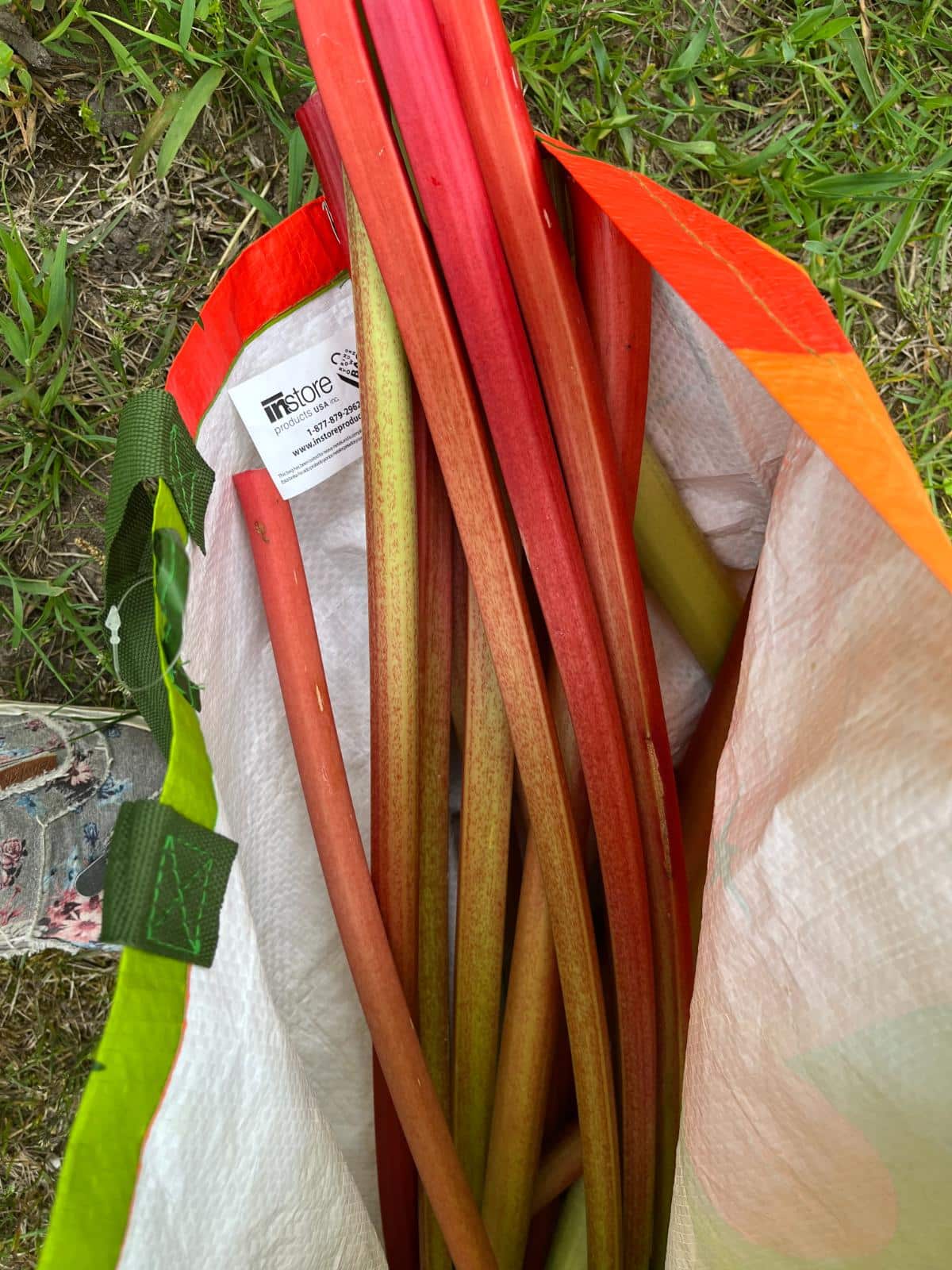
Many people think you can’t pick rhubarb after June, but the truth is that you can pick rhubarb any time during the growing season, from about April through the fall.
You should be able to easily get a solid 8 to 10 weeks of large harvests from your rhubarb plants. After about June or early July, though, plant production and growth slow down, so you only want to harvest sparingly and occasionally – not the near-daily harvests you could manage early in the season.
The reason for this is that the plant needs to feed the root crown and prepare for winter dormancy and then the next year’s season ahead. If you harvest too much for too long, there will not be anything “wrong” or harmful with the harvest, but you put the plant at risk of starving and dying out.
12. Slow Harvests When Plant Production Slows Down Noticeably
Always leave 30 to 50% of the plant when you harvest so the plant can keep photosynthesizing and feeding itself. After about 8 to 10 weeks of harvesting, it’s time to stop picking your rhubarb.
You can still pick some rhubarb here and there when you want to prepare a dish, but you should plan to take most of your harvest early in the season.
You can continue to pick rhubarb straight through fall. It’s a myth that you can’t pick or eat rhubarb after June. The reason to seriously reduce harvesting as the summer goes on is so that the plant can continue to feed and support itself.
You want to aim to leave between one-third and one-half of the plant after the biggest harvest period to leave the plant to rebuild and regrow the roots for next year.
A few later harvests here and there won’t be a detriment to your rhubarb plant. It is smart to pick and preserve rhubarb for later on and to do your major canning or preserving earlier in the season when the plant is producing fast and furiously.
Do note, too, that stalks will get tougher and a little drier later in the season. One trick is to use a vegetable peeler on the edges, which are bound to be the toughest. Even late-season rhubarb is quite good and will cook down well enough in texture, too.
When is Rhubarb Ripe? When Can You Pick Rhubarb?
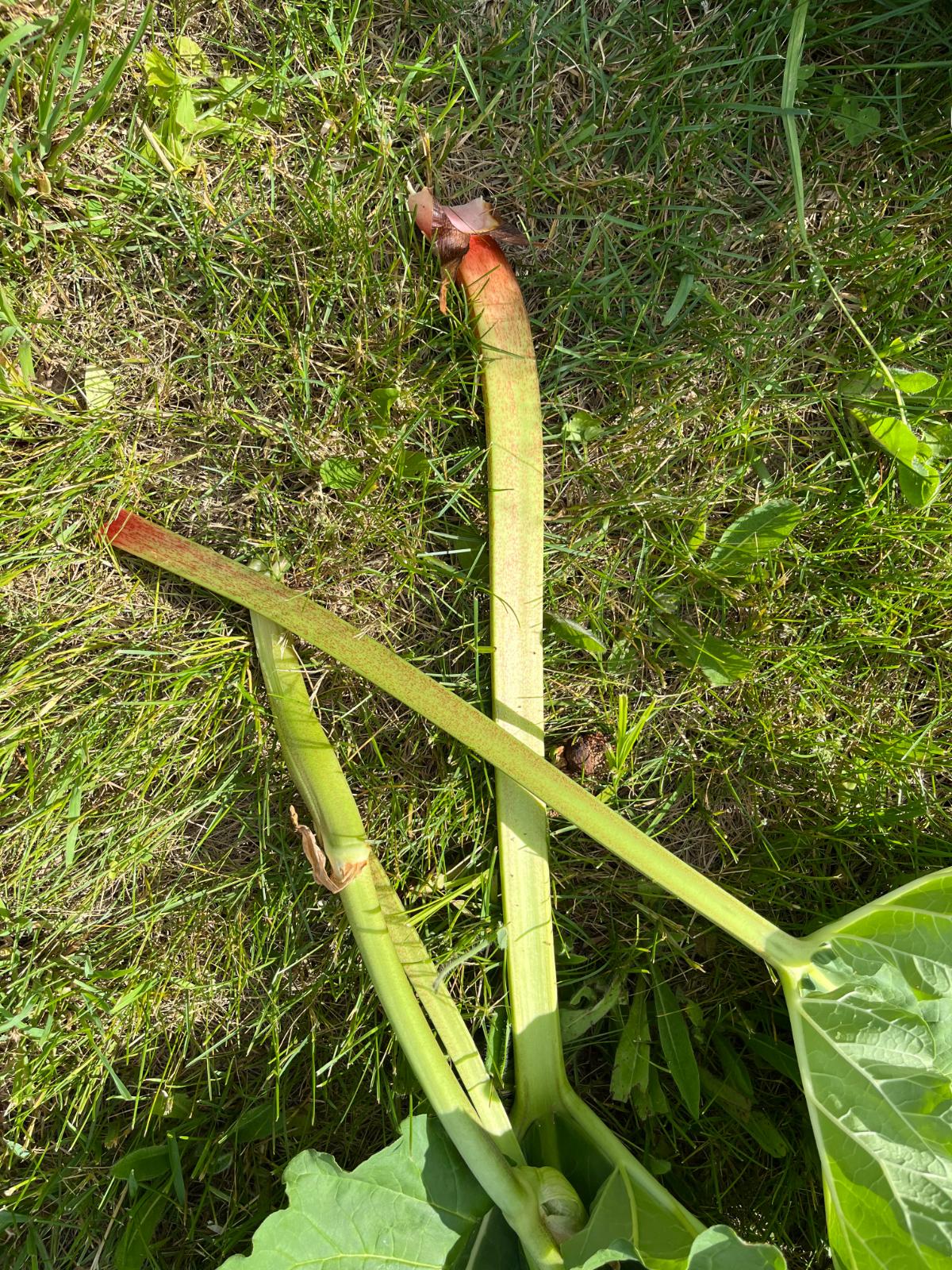
Rhubarb does not need to be “ripe” in the way other vegetables and fruits do. Calling rhubarb “ripe” is a bit of a misstatement, a poor choice of wording, because it doesn’t apply to rhubarb.
Rhubarb stalks are essentially always ripe. There is a right time to pick them, though, as mentioned above. Basically, rhubarb is ready to pick any time it is more than 10 or 12 inches long at the stalk.
You should pick rhubarb stalks while they are still firm and juicy, though. If they’re left too long on the plant, they will dry out and wither, and then they won’t be as flavorful or have the quality you’ll want.
Remember that rhubarb leaves are not edible. Always cut and discard the leaves from rhubarb plants. Also trim off and discard the stem ends (last two or so inches of the base of the stalk).
Don’t Forget to Divide
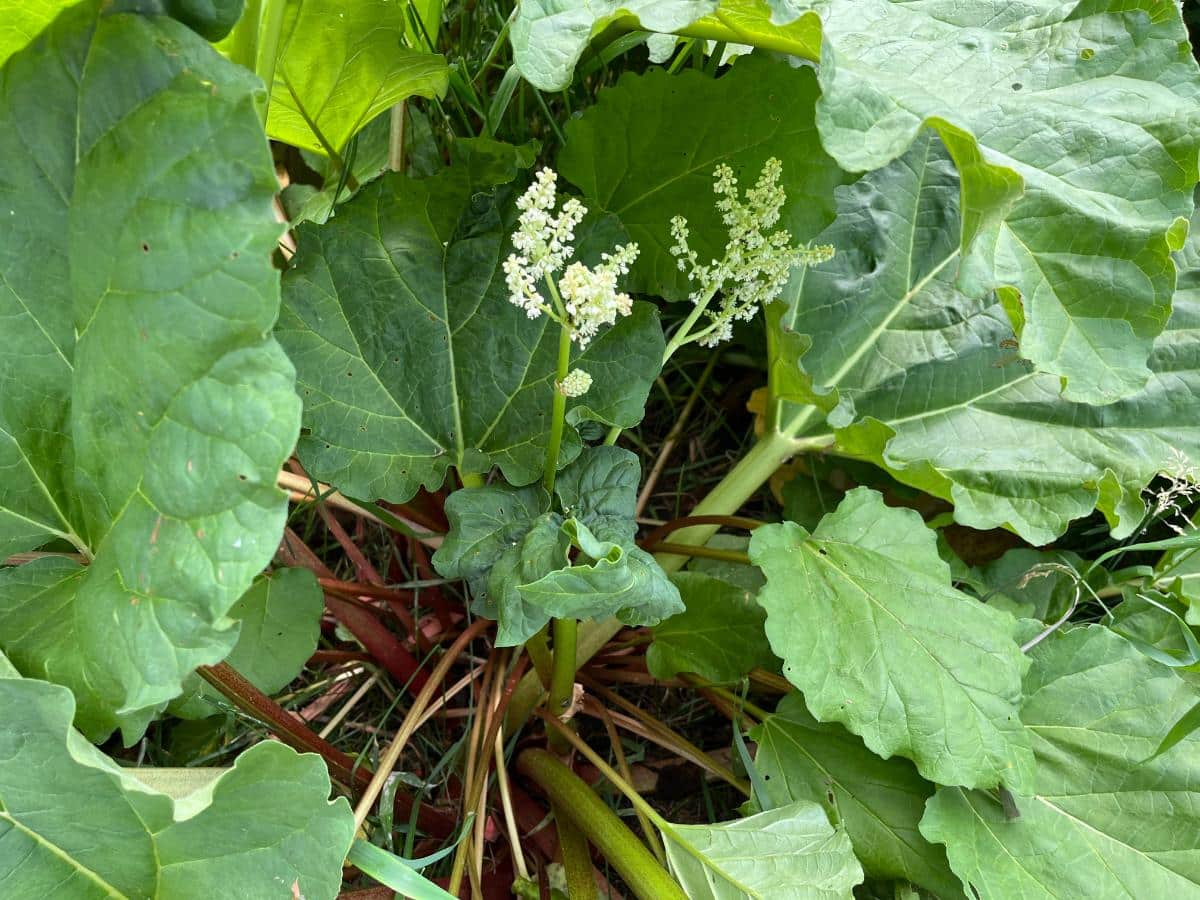
Rhubarb grows from buds at the outside of the plant. After several years of growth, the root crown will get crowded in the center and production diminishes.
Over time, the inside of the plant will produce smaller, straggling stalks, and production will seriously decrease. Plants that aren’t divided may become thin, struggling, unproductive plants.
When you start to see the diameter of your rhubarb stalks shrinking and the plant (especially in the center) is crowded with thin, spindly stalks, you’ll know it’s time to divide your rhubarb plants again.
After a while, if you ignore dividing, you may see few to no stalks produced in the center of the plant, and over time, the plant may stop producing in the middle altogether.
To keep your rhubarb producing well and growing thick, large stalks, divide it every three to five years. You can replant the divided sections, pot them up to sell or give away or share with family and friends.
Rhubarb is a Hungry Plant
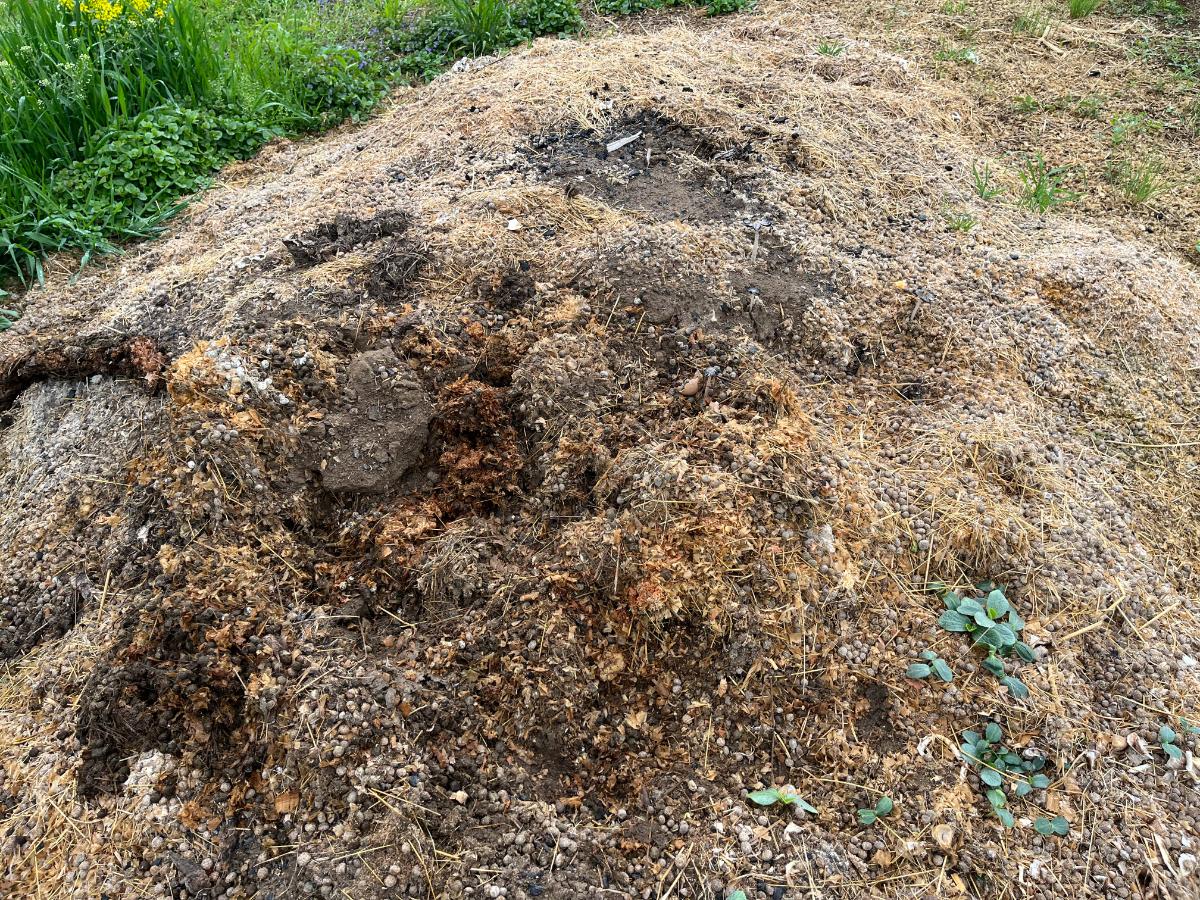
Rhubarb is a heavy feeder. It's a large perennial plant that needs to be fed every year to support itself and produce well.
Feed your rhubarb patch with a healthy dose of compost or aged manure each year. You can do this in the fall, but you need to wait until the rhubarb plant is dormant or you risk stimulating new growth at the wrong time of year that then becomes damaged by winter cold and freezing.
You can also apply compost, manure, or fertilizer in the early spring, either before the plant breaks dormancy or just as it is waking up.
This Year’s Care and Harvest Affect Next Year’s, Too
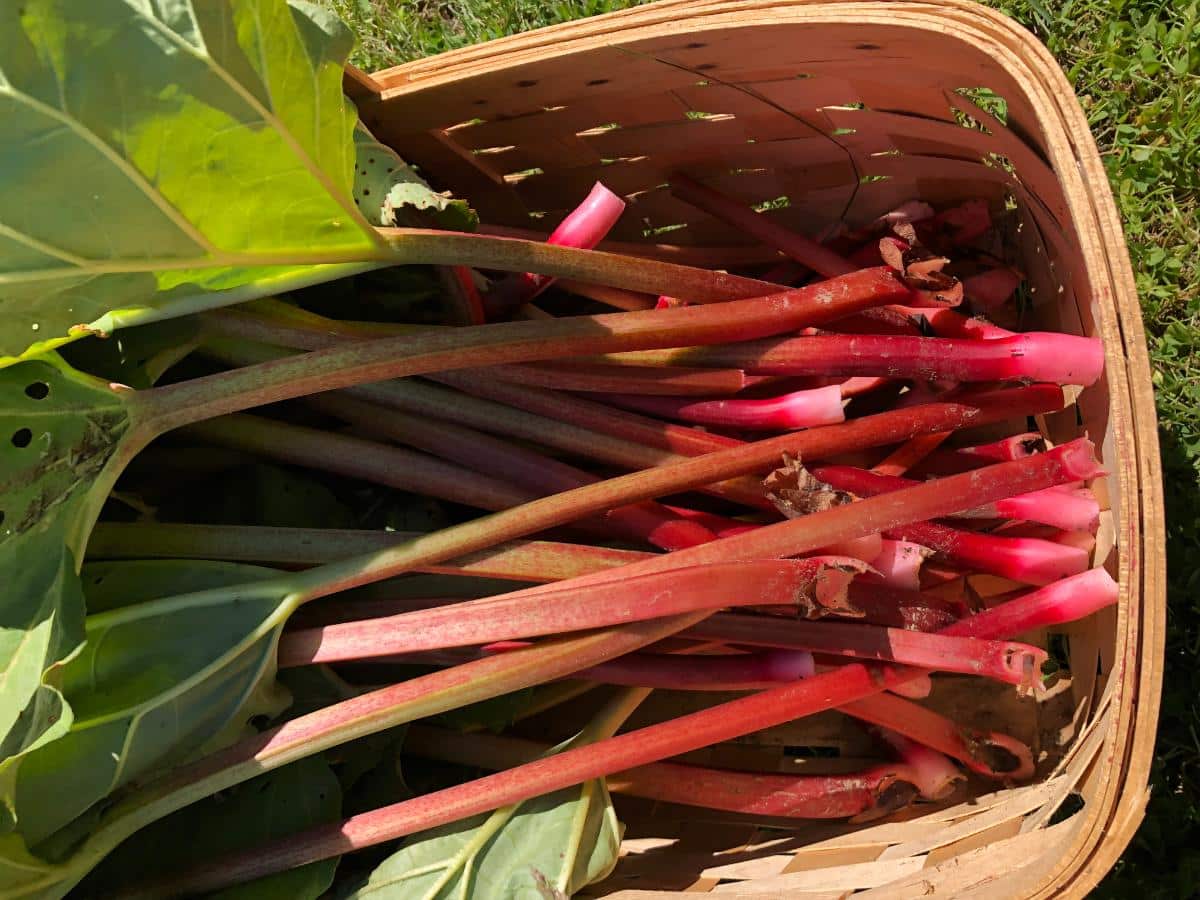
The way you harvest your rhubarb, including how much, how often, and how long, all impacts the future harvests you’ll get from your plants.
Follow these tips, provide good, basic plant care and feeding, and harvest each year with the future of your perennial rhubarb plant in mind.
Do these things, and your rhubarb patch will treat you for years to come!


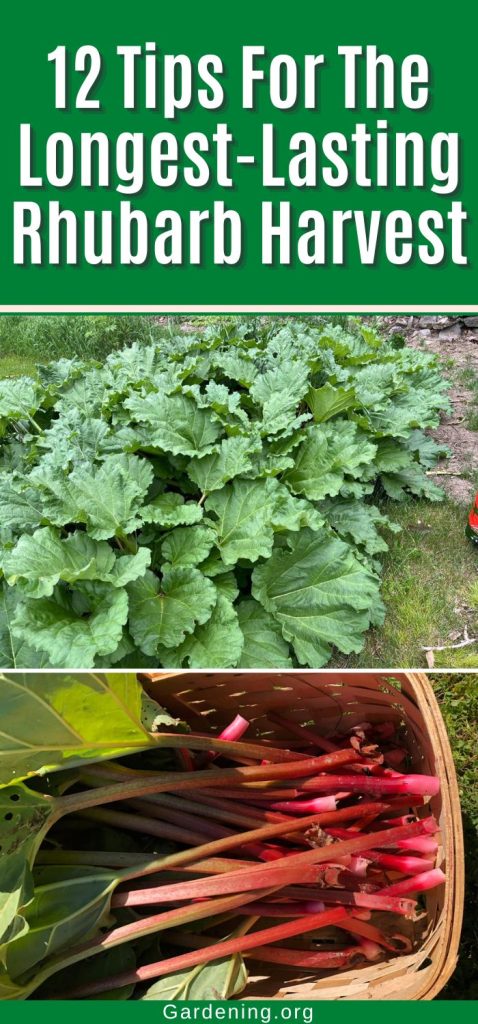
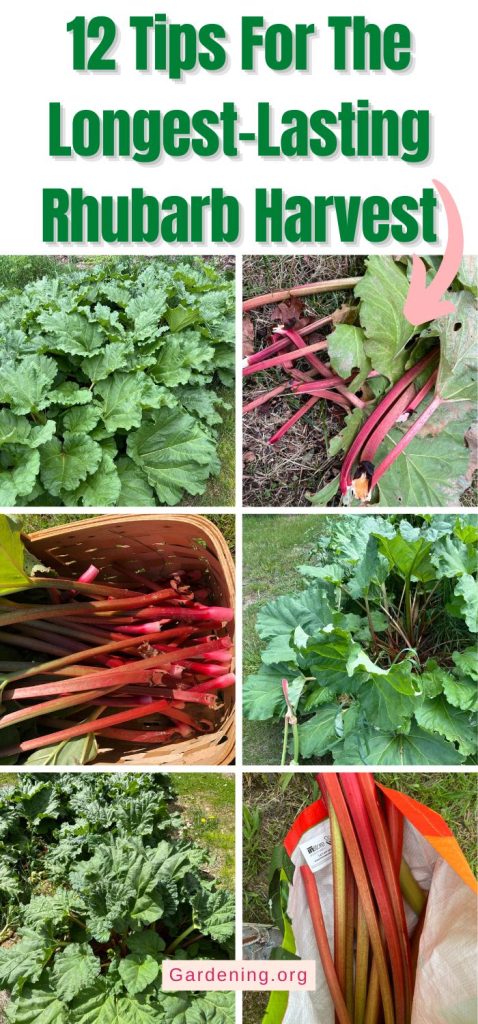
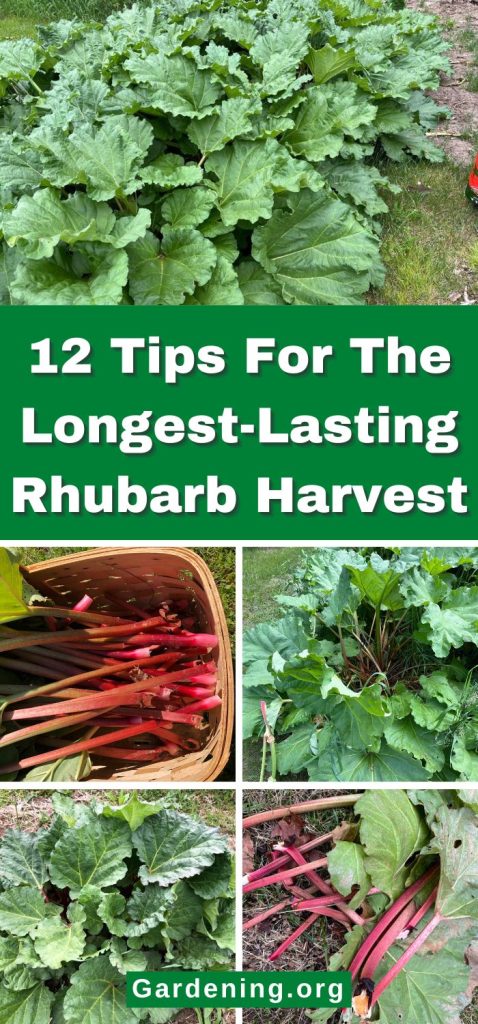




Leave a Reply